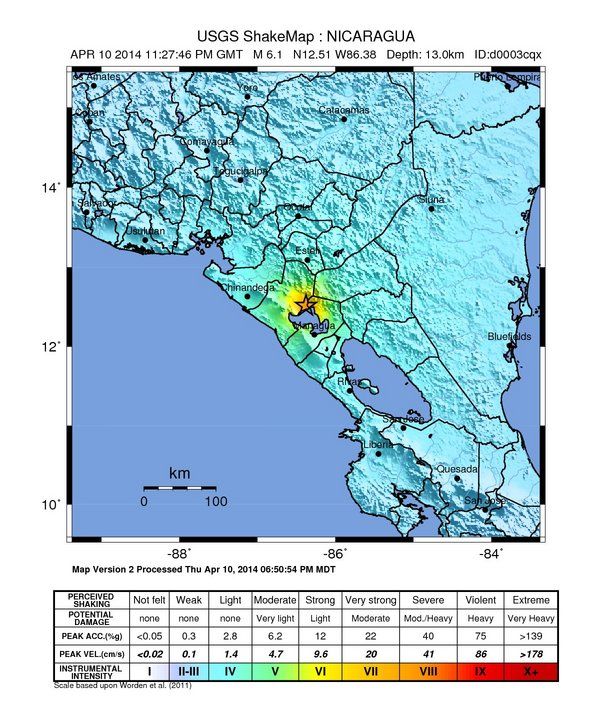Damaging Earthquake Strikes Nicaragua

An earthquake of magnitude 6.1 shook Nicaragua Thursday (April 10), according to the U.S. Geological Survey (USGS).
The earthquake's epicenter was about 27 miles (44 kilometers) northwest of the capital of Managua. The quake originated 8.1 miles (13 km) deep and struck at 5:27 p.m. local time (23:27 UTC), the U.S. Geological Survey (USGS) reports.
More than 250 people were injured during the earthquake and one woman died of a heart attack, according to SINAPRED, the country's national disaster management agency. More than 1,000 houses were damaged and landslides blocked a highway near Managua, an agency spokesperson said at a press conference. President Daniel Ortega decreed a yellow alert and cancelled school in the provinces of León and Managua because of the risk of further damage from aftershocks, according to news reports.
A magnitude-6.2 earthquake beneath Managua destroyed much of the capital city in 1972, displacing two-thirds of the city's 325,000 residents and killing as many as 7,000 people, according to the USGS.
Earthquakes of this size can cause significant damage, especially with poorly built structures. Even well-designed buildings can be damaged or, in some cases, destroyed, depending on the severity of the quake and a building’s proximity to the epicenter. Earthquakes of this size are sometimes followed by significant aftershocks.
The damage caused by any single event depends on the quake's depth, proximity to populated areas, building standards in the region, as well as the type of earthquake. The USGS frequently updates the magnitude of an event after more data is analyzed.
An earthquake's magnitude is a measure of the energy released at the source. It is just one predictor of the shaking that may ensue, which is affected by local and regional geology. Scientists know in a general sense what causes earthquakes but are unable to predict specific quakes.
Sign up for the Live Science daily newsletter now
Get the world’s most fascinating discoveries delivered straight to your inbox.
This article will be updated if significant additional information becomes available. Find more earthquake news here.
Follow us @livescience, Facebook & Google+.











